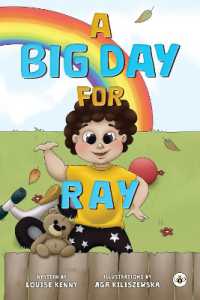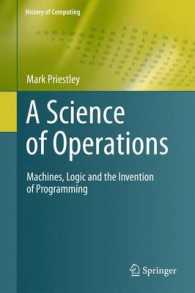Full Description
The last century has seen radical social changes in Ireland, which have impacted all aspects of local life but none more so than traditional Irish music, an increasingly important identity marker both in Ireland and abroad. The author focuses on a small village in County Clare, which became a kind of pilgrimage site for those interested in experiencing traditional music. He begins by tracing its historical development from the days prior to the influx of visitors, through a period called "the Revival," in which traditional Irish music was revitalized and transformed, to the modern period, which is dominated by tourism. A large number of incomers, locally known as "blow-ins," have moved to the area, and the traditional Irish music is now largely performed and passed on by them. This fine-grained ethnographic study explores the commercialization of music and culture, the touristic consolidation and consumption of "place," and offers a critique of the trope of "authenticity," all in a setting of dramatic social change in which the movement of people is constant.
Contents
Chapter 1. Introduction
Conceptual Orientation
Conceptual Organization
Doolin
PART I: REMEMBERED HISTORY
Chapter 2. The Old Days
Ethnography, History and Memory
Subsistence and Seasonality
Argonauts of the Eastern Atlantic
Seasonality Tourism in Clare in 1859
(On the Origins of a New Species)
Traditional Irish Music of the "Old Days"
The Céilí and the Crossroads Dance
The Country House Dance
The Dance Halls and The Céilí Bands
Early Collections and Early Sessions
Conclusions
Chapter 3. The Revival
A Changing Economy
The Folk Revival
Internal Changes in Irish Music
The Revival Arrives
Turning the Tune
Conclusions
PART II: MOVING IN AND MOVING THROUGH
Chapter 4. The Celtic Tiger
Celtic Tourism
Mass Tourists
Coach Tours
"Travelers", Working Tourists, and Visitors
Conclusions
Chapter 5. Locals and Blow-ins
Locals
Blow-ins
Negotiations of Belonging
Conclusions
PART III: CHANGE AND CONTINUITY
Chapter 6. Consolidation and Globalization
Traditional Music of the Celtic Tiger
Doolin's Celtic Music Industry
Bands and Sessions, Performing and Playing
Paying to Play
Conclusions
Chapter 7. Adoption and Approriation
Appropriation
Adoption
Complementary Discourses
Phenomenology of the Session
Premeditated Spontaneity
Music as a Conversation
Perfect Embodiment and Good Craic
Conclusions
Chapter 8. Conclusions
History, Globalization, and Tourism
Appropriation, Tradition, and Cosmopolitanism
The Trope of Authenticity
Credibility
One's Relationship to the Locale
One's Epistemological Relationship to the Music
Immediate Context
Seasonality
The Interaction of Personalities
Good Man, Yourself
Bibliography
Index








